People often ask when is the best time to visit Estonia and I don’t have a short answer to this question. Estonia experiences a wide range of weather conditions due to its Northern European location. In the summer months of June to August, temperatures can reach up to 30°C (86°F), but it’s not unusual to experience cold spells, with temperatures sometimes falling to around 10°C.
A unique feature of Estonian summers, particularly in June and July, is the long daylight hours, with the sky staying bright and resembling twilight even at night. Winters, from December to February, are quite cold with temperatures often dropping to -20°C (-4°F), accompanied by heavy snowfall that can leave 20-30 cm of snow on the ground. Spring and autumn serve as transition periods, with the spring season also bringing the phenomenon of the “fifth season” in Soomaa National Park, where melting snow leads to flooding in low areas and for a few weeks canoe is the main transport there.
Table of Contents
Weather in Estonia in January
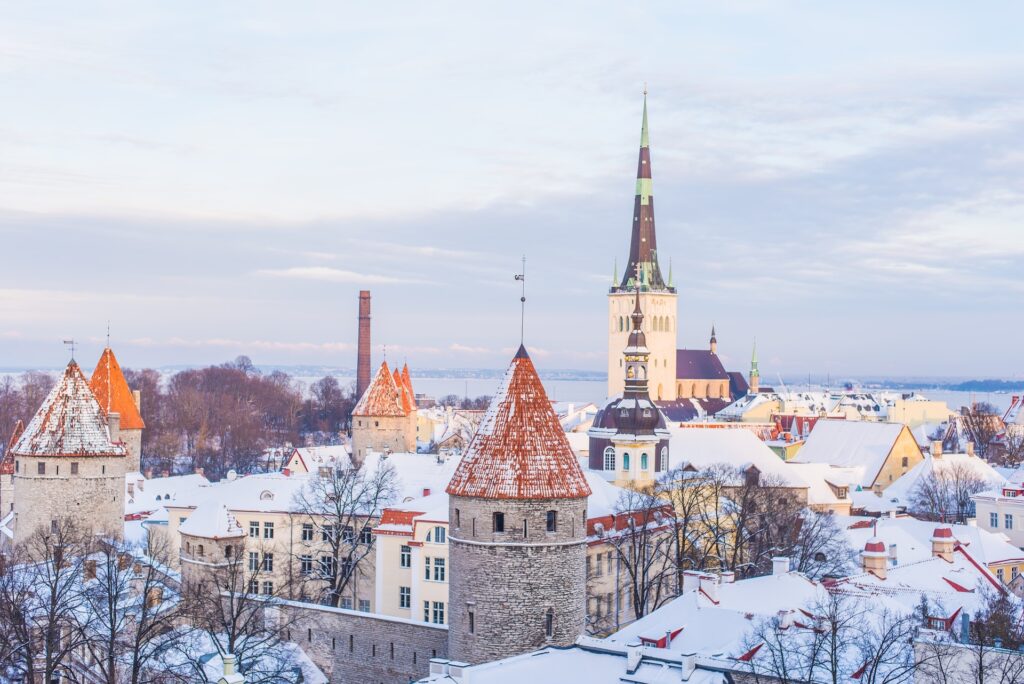
The average temperature during daytime in January is -1°C (30°F), and during nighttime is -6°C (22°F). Average precipitation is 49mm (1.9 inches).
In January, the streets are usually filled with snow and ice.
You can still visit the Christmas Market in Tallinn because of Orthodox Christmas on the 7th of January (usually it is open until then)
Weather in Estonia in February
The average temperature during daytime in February is -1°C (30°F), and during nighttime is -7°C (20°F). Average precipitation is 39mm (1.5 inches).
Just like in January, the streets are usually filled with snow and ice.
Weather in Estonia in March
The average temperature during daytime in March is 3°C (37°F), and during nighttime is -4°C (25°F). Average precipitation is 35mm (1.4 inches).
I will never answer “March” to the question “when is the best time to visit Estonia”. March is definitely one of the worst times to visit Estonia. This is when the temperature often rises above freezing, causing the snow to melt and leaving a lot of puddles and mud outdoors. As a result, merely walking in the streets can become quite challenging.
Weather in Estonia in April
The average temperature during daytime in April is 10°C (49°F), and during nighttime is 1°C (34°F). Average precipitation is 34mm (1.3 inches).
April is also not an ideal time to visit as snowfall can still occur, and remnants of ice may still be melting in the streets. This period often involves extensive street cleaning due to the mud and dust that come with the melted snow. So, trust me on this one, it’s not the perfect time to stroll around the city.
Weather in Estonia in May
The average temperature during daytime in May is 16°C (60°F), and during nighttime is 6°C (42°F). Average precipitation is 42mm (1.7 inches).
May is a good time to visit Estonia. It’s getting warmer, the days are becoming very long, and typically there isn’t much rain. All the snow and ice have melted by this time, resulting in less dust in the streets. The leaves on the trees and flowers are starting to emerge.
Weather in Estonia in June
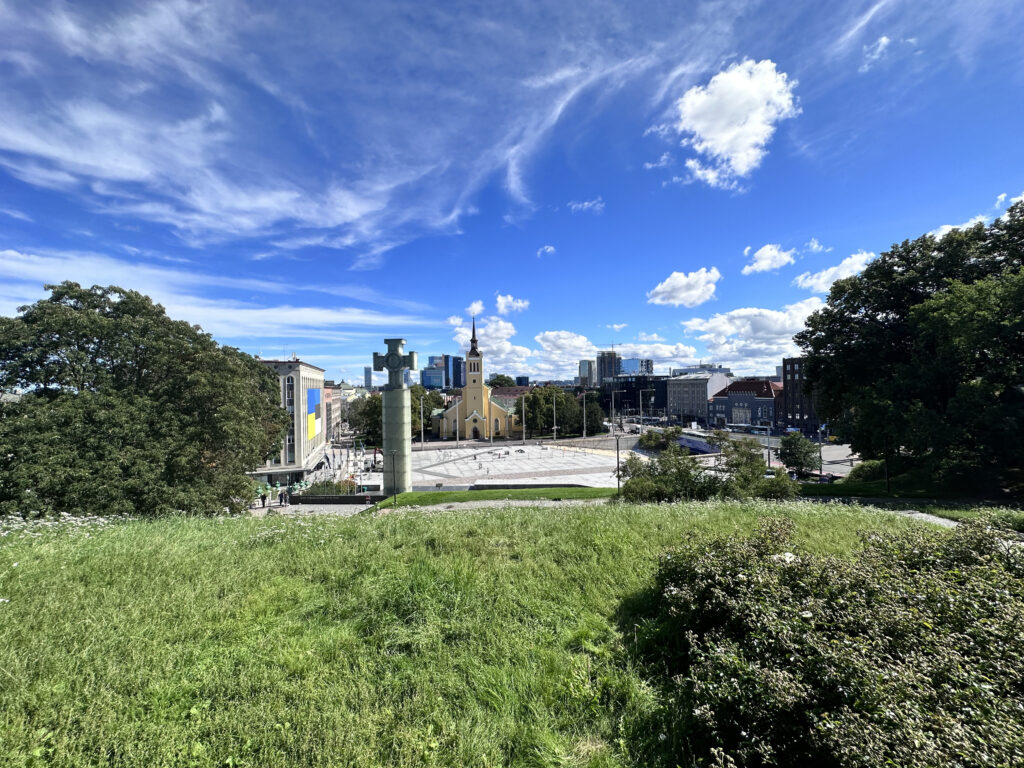
The average temperature during daytime in June is 19°C (67°F), and during nighttime is 10°C (50°F). Average precipitation is 70mm (2.8 inches).
Summer is obviously the best time to visit Estonia. Days are super long now with almost 19 hours of daylight and nights are more of a twilight time. It’s warm outside and sometimes you can even hit the beach in June.
June is also the month when the Midsummer celebration, Jäänipäev, takes place. If you’re unfamiliar with this holiday, be prepared: from the 23rd to the 24th of June, most places may be closed as it’s official holiday in Estonia and locals often celebrate by leaving the city. Local celebrations featuring live music and large bonfires are common throughout Estonia.
Weather in Estonia in July
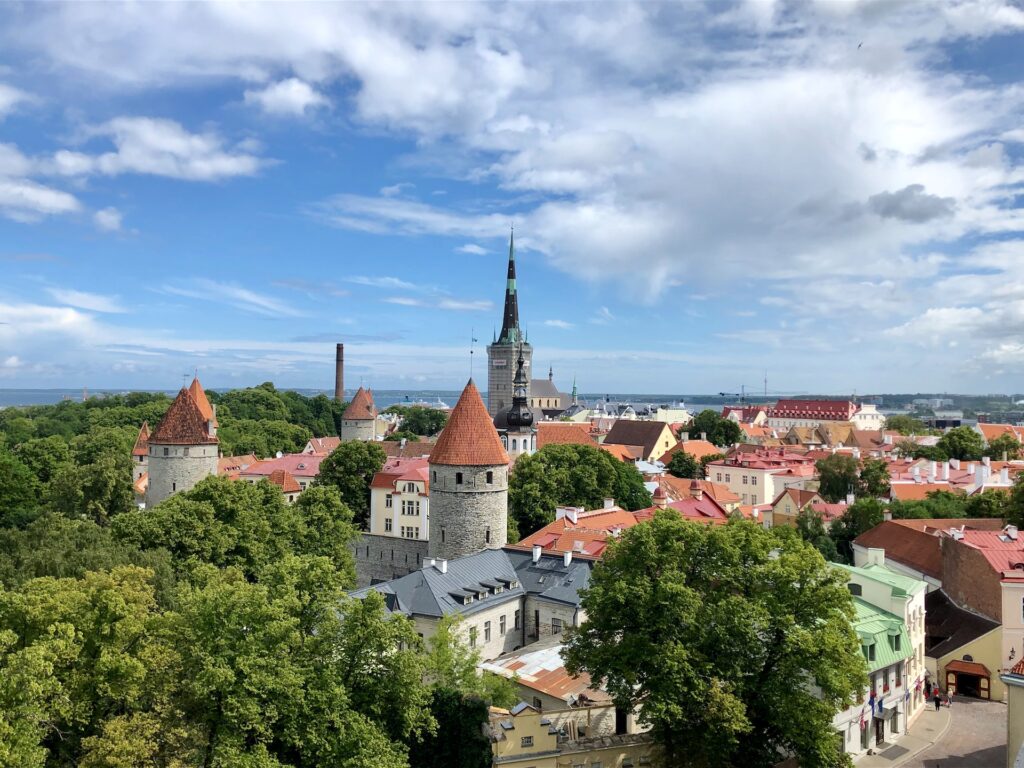
The average temperature during daytime in July is 22°C (72°F), and during nighttime is 13°C (56°F). Average precipitation is 67mm (2.6 inches).
Personally if you ask me when is the best time to visit Estonia, I will probably say it’s July. The days are warm with temperatures occasionally reaching up to 30 degrees Celsius, and even at night, you can comfortably walk around in shorts and a T-shirt.
People often spend their time at the beach, and there are plenty of them along the sea or by the lakes. There are a lot of festivals and other celebrations taking place in July.
Weather in Estonia in August
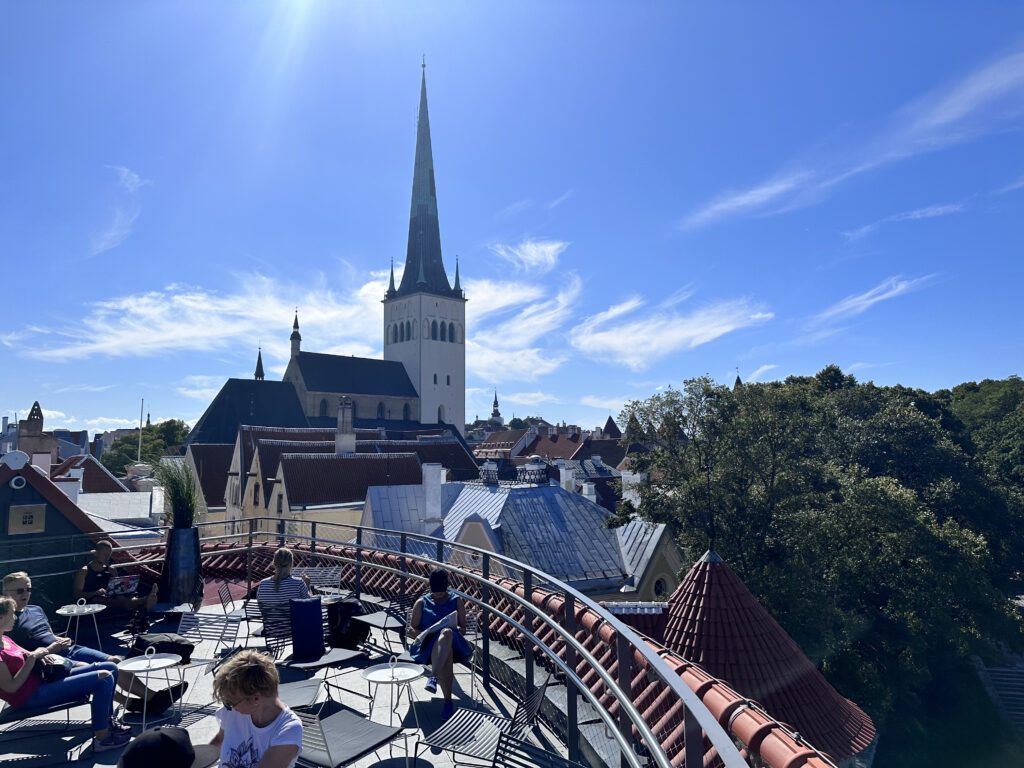
The average temperature during daytime in August is 21°C (70°F), and during nighttime is 13°C (54°F). Average precipitation is 81mm (3.2 inches).
August is also a good time to visit Estonia. Days are warm, but it does no get too hot and nights are warm, especially in the first half of the month, but be prepared that you may need a jacket at some point during your stay in August.
Weather in Estonia in September
The average temperature during daytime in September is 16°C (61°F), and during nighttime is 9°C (47°F). Average precipitation is 58mm (2.3 inches).
September, especially the first half of the month, can often be characterized by an Indian summer, making it a good time to visit Estonia. It’s still warm, there isn’t much rain, and the trees turn various colours, creating a beautiful display.
Weather in Estonia in October
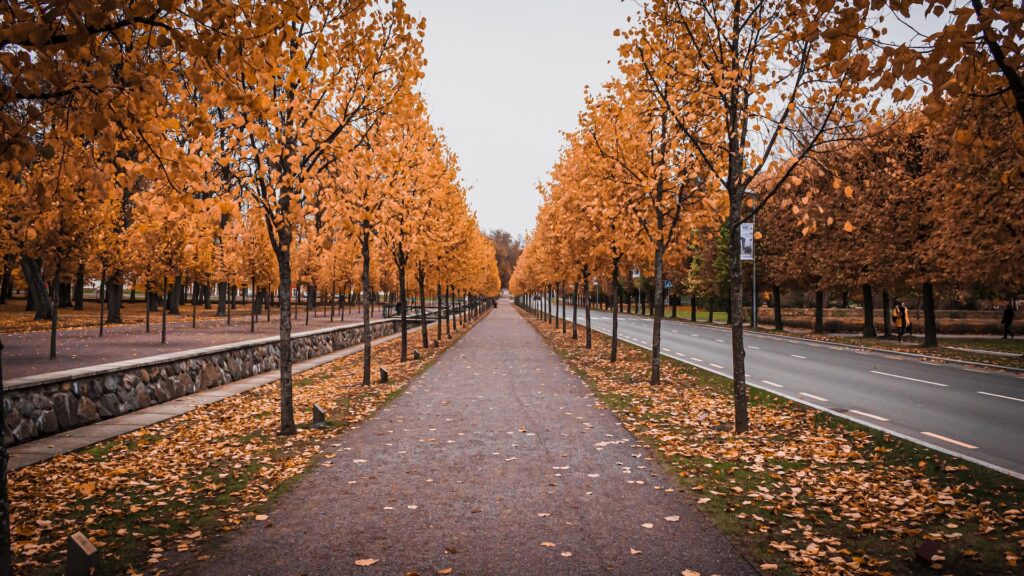
The average temperature during daytime in October is 10°C (49°F), and during nighttime is 4°C (39°F). Average precipitation is 72mm (2.8 inches).
October, especially the second half of the month, is not an ideal time to visit Estonia. By then, all the trees are without leaves, it gets dark too early, and there is a lot of rain.
Weather in Estonia in November
The average temperature during daytime in November is 4°C (39°F), and during nighttime is 0°C (32°F). Average precipitation is 61mm (2.4 inches).
Just like October, it may be not a good time to visit Estonia.
It can be snowing sometimes, but usually it melts right away.
Weather in Estonia in December
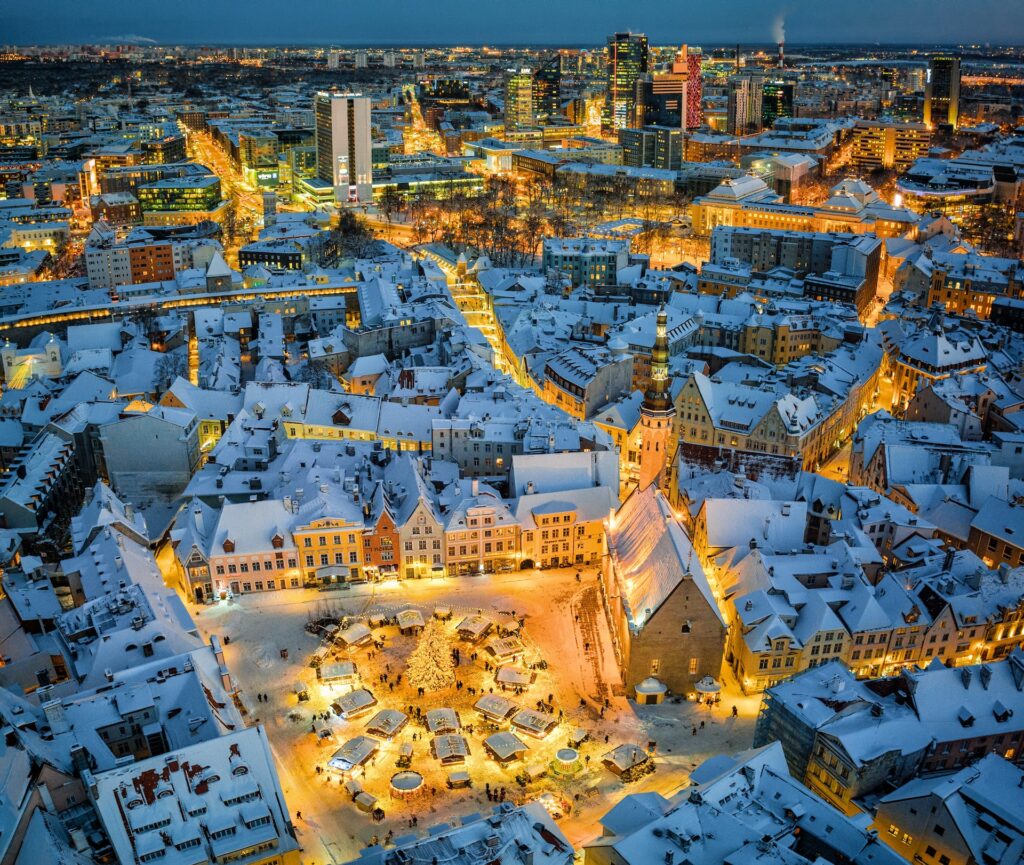
The average temperature during daytime in December is 1°C (34°F), and during nighttime is -3°C (26°F). Average precipitation is 53mm (2.1 inches).
As for snow in December, it’s pretty unpredictable. It can snow a lot without melting, or it could just rain for the whole month without any snowfall – this is especially true for Tallinn and other places by the sea. Usually, at some point in December there is a snowfall, which stays and does not melt.
December is an excellent time to visit Estonia, particularly Tallinn, which becomes extensively decorated for Christmas and hosts a famous Christmas Market, considered by many as one of the most beautiful in Europe.
When is the best time to visit Estonia (conclusion)
In summary, the best time to visit Estonia truly depends on what you’re seeking in your journey.
For beach holidays and festivals, the summer months of June through August are ideal, offering warm temperatures and long days full of sunlight. If you’re interested in experiencing the natural beauty of the changing seasons, May and the first half of September offer pleasant weather conditions and picturesque landscapes.
For those enchanted by the charm of winter and the festive spirit, December presents a magical experience with the chance of snow and the renowned Tallinn Christmas Market.
Keep in mind that each season comes with its own unique charm and sets of activities, making Estonia a great year-round destination. Choose your favourite season, pack accordingly, and enjoy the unique experience that Estonia has to offer.
